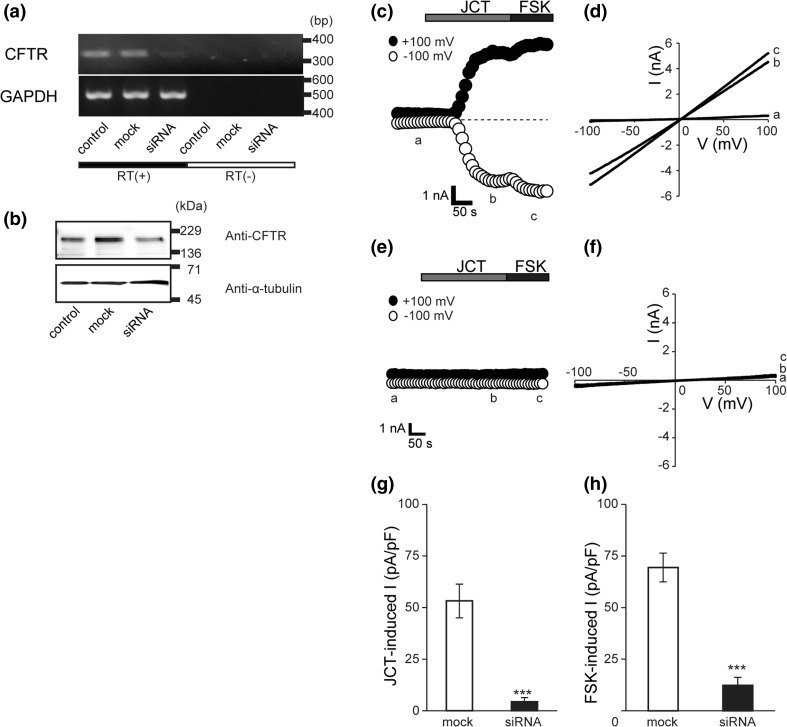Fig. 4.
Effects of small interfering RNA (siRNA) silencing of CFTR on JCT-induced anion currents in Caco-2 cells. a RT-PCR analysis of CFTR mRNA and glyceraldehyde-3-phosphate dehydrogenase (GAPDH) mRNA in control, mock-treated and CFTR siRNA-treated Caco-2 cells. The data represent 3 similar experiments. No PCR product was amplified when reverse transcriptase was omitted from the reaction in the RT(−) group. The nucleotide sequences of the PCR products obtained with CFTR-specific primers were completely identical to the corresponding sequences in human CFTR (4302-4722 Sequence ID: NM_000492.3). b Immunoblot of CFTR protein from control, mock-treated and CFTR siRNA-treated Caco-2 cells. Alpha-tubulin bands with molecular mass 50 kDa were detected at equal levels. c–h Representative time courses of the JCT-evoked whole-cell currents recorded at +100 and −100 mV under ramp clamp in mock siRNA-treated cells (c) and in CFTR siRNA-treated cells (e). Gray bar and solid bar show application of 400 μg/mL of JCT and 10 μM of FSK, respectively. Corresponding I–V relationships at time points a–c in d and a–c in f. g, h Averages of JCT-induced whole-cell current at +100 mV in mock and CFTR siRNA (g), and FSK-induced whole-cell current (h) (n = 5–6). Data points show the mean ± SEM. *P < 0.05 compared to mock at +100 mV

